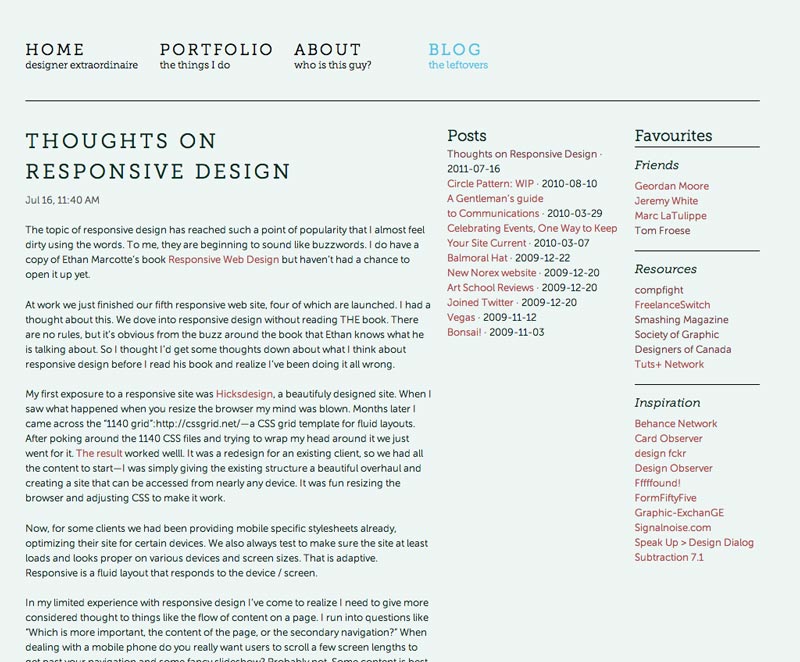Truth in design — make it yourself
Jan 03, 2014 2 CommentsI’ve been bothered lately by the abundance of UI packs, starter templates, icon fonts, tutorials and everything of the like. Maybe I’m getting cranky and opinionated in my old age—but I feel that relying on these things is lazy, irresponsible and contrary to how I was taught in art school. I think we should take the time to explore and experiment with designs—but more importantly consider the brand, company or person you are trying to represent with the design. That should inform the aesthetic more than personal taste, trending styles or access to tutorials.
To be clear, I have nothing against the existence of the above mentioned tools; just the irresponsible use of them. If you aren’t a designer or lack the appropriate skills, and you are looking for a way to get a proof of concept or build a working prototype, then by all means go grab Twitter Bootstrap, download a flat UI kit or whatever. If you are a designer, or developer, however; I implore you to take the time to really think about what your working on and don’t just use something someone else built to get it done.
I also have great respect for those who take the time to built these great tools and intend to help others; it’s just that we are beginning to lose that so-called element of “craftsmanship” when we use someone else’s designs. In the quest for efficiency and profitability I feel we’ve sacrificed a fundamental element of design.
Design is the purpose, plan or intention behind an action or object.
By slapping a framework on your product you are forgoing one of, if not the most, key parts of developing any idea. Design is the visual language of your product; do you really want it to sound the same as every other product using the same framework?
Learning Through Doing
So much is learned in the process of figuring things out. If you download a UI kit with all the buttons and text styled for you you’re missing out on learning why those things work. Trying and failing and trying again until you find that perfect font size for legibility and anti-aliasing setting for crisp text teaches you a lot; not just about the software but also about the importance of all these small decisions and how they begin to add up to a form gestalt.
By starting from scratch you will learn over time how to best pad type within a button based on it’s context, or how to space images and other elements from each other in a layout to clearly communicate relationships and hierarchies. I compare this to paint by numbers. Anyone with the ability to read, hold a brush and dip it in paint can follow the directions to paint a seemingly nice painting. For the beginner it’s a fantastic feeling to accomplish something you previously thought only talented professionals could pull off. It’s also a great way to build the foundation skills and confidence needed before you dicard the training wheels and take more risks. If you’re trying to be a professional I feel strongly that you should make it yourself.
I recently read this article which shares a common theme, and I agree with the sentiment: http://scottkellum.com/2013/12/11/ui-kit-is-dead.html
Update
Frank Chimero’s recent post “Homesteading 2014” also shares a similar sentiment; where he alludes to detaching from the digital noise of all these web services we eagerly adopt and instead building your own “web home” from scratch; a place you are proud to live in.


